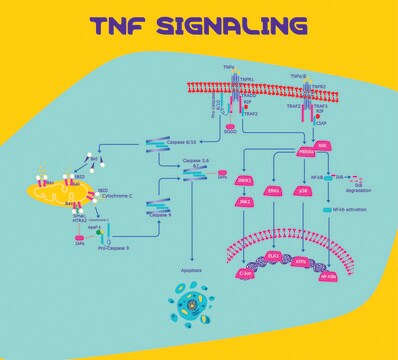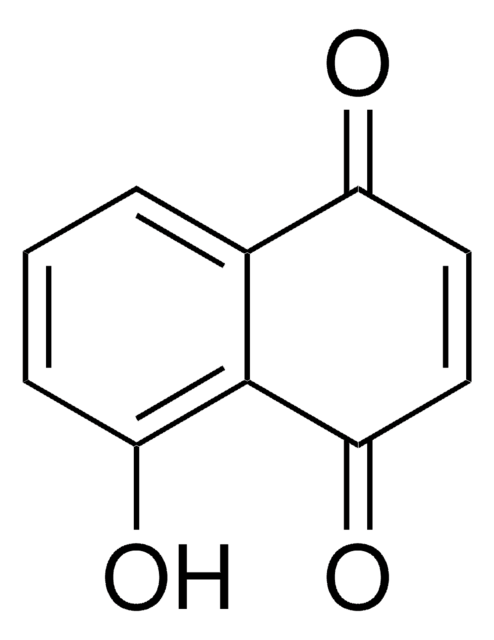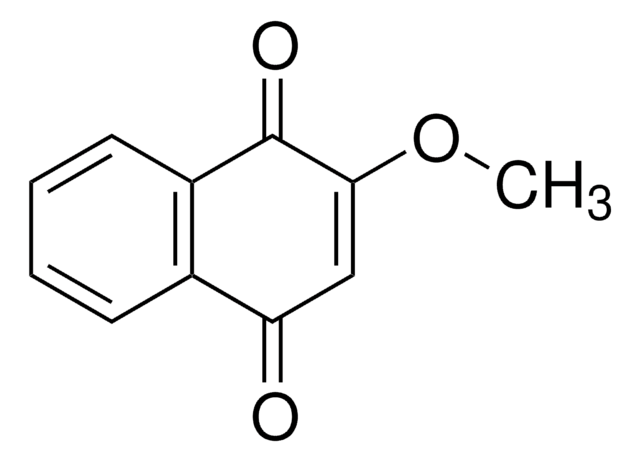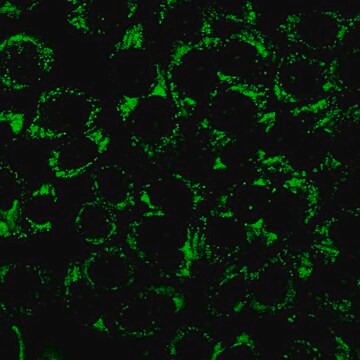D5439
2,3-Dimethoxy-1,4-naphthoquinone
≥99%, solid
Sinonimo/i:
DMNQ
Autenticatiper visualizzare i prezzi riservati alla tua organizzazione & contrattuali
About This Item
Formula empirica (notazione di Hill):
C12H10O4
Numero CAS:
Peso molecolare:
218.21
Numero MDL:
Codice UNSPSC:
12352200
ID PubChem:
NACRES:
NA.77
Prodotti consigliati
Livello qualitativo
Saggio
≥99%
Stato
solid
Temperatura di conservazione
−20°C
Stringa SMILE
COC1=C(OC)C(=O)c2ccccc2C1=O
InChI
1S/C12H10O4/c1-15-11-9(13)7-5-3-4-6-8(7)10(14)12(11)16-2/h3-6H,1-2H3
ZEGDFCCYTFPECB-UHFFFAOYSA-N
Applicazioni
2,3-Dimethoxy-1,4-naphthoquinone has been used to investigate the effects of ethanol on podocyte apoptosis under hypoxic and hyperoxic conditions.
Used to study the role of ROS in cell toxicity, apoptosis, and necrosis.
Azioni biochim/fisiol
2,3-dimethoxy-1,4-naphthoquinone (DMNQ) has the ability to produce H2O2 through redox cycling but fails to conjugate with glutathione (GSH).
Avvertenze
Warning
Indicazioni di pericolo
Consigli di prudenza
Classi di pericolo
Eye Irrit. 2 - Skin Irrit. 2 - STOT SE 3
Organi bersaglio
Respiratory system
Codice della classe di stoccaggio
11 - Combustible Solids
Classe di pericolosità dell'acqua (WGK)
WGK 3
Punto d’infiammabilità (°F)
Not applicable
Punto d’infiammabilità (°C)
Not applicable
Dispositivi di protezione individuale
dust mask type N95 (US), Eyeshields, Gloves
Scegli una delle versioni più recenti:
Possiedi già questo prodotto?
I documenti relativi ai prodotti acquistati recentemente sono disponibili nell’Archivio dei documenti.
I clienti hanno visto anche
Acute ethanol induces apoptosis by stimulating TRPC6 via elevation of superoxide in oxygenated podocytes
Lu X Y, et al.
Biochimica et Biophysica Acta - Molecular Cell Research, 1853(5), 965-974 (2015)
Anne R Diers et al.
Redox biology, 1, 1-7 (2013-09-12)
Nitric oxide production by the endothelium is required for normal vascular homeostasis; however, in conditions of oxidative stress, interactions of nitric oxide with reactive oxygen species (ROS) are thought to underlie endothelial dysfunction. Beyond canonical nitric oxide signaling pathways, nitric
Tindaro M Giardina et al.
Biochimica et biophysica acta, 1777(2), 118-129 (2007-12-18)
Uncoupling protein-2 (UCP2) is a member of the inner mitochondrial membrane anion-carrier superfamily. Although mRNA for UCP2 is widely expressed, protein expression is detected in only a few cell types, including macrophages. UCP2 functions by an incompletely defined mechanism, to
Richard Eugene Frye et al.
Scientific reports, 7(1), 4478-4478 (2017-07-02)
Mitoplasticity occurs when mitochondria adapt to tolerate stressors. Previously we hypothesized that a subset of lymphoblastoid cell lines (LCLs) from children with autistic disorder (AD) show mitoplasticity (AD-A), presumably due to previous environmental exposures; another subset of AD LCLs demonstrated
Valerie P Wright et al.
The Journal of physiology, 587(Pt 23), 5767-5781 (2009-10-21)
Skeletal muscles produce transient reactive oxygen species (ROS) in response to intense stimulation, disuse atrophy, heat stress, hypoxia, osmotic stress, stretch and cell receptor activation. The physiological significance is not well understood. Protein phosphatases (PPases) are known to be highly
Il team dei nostri ricercatori vanta grande esperienza in tutte le aree della ricerca quali Life Science, scienza dei materiali, sintesi chimica, cromatografia, discipline analitiche, ecc..
Contatta l'Assistenza Tecnica.












